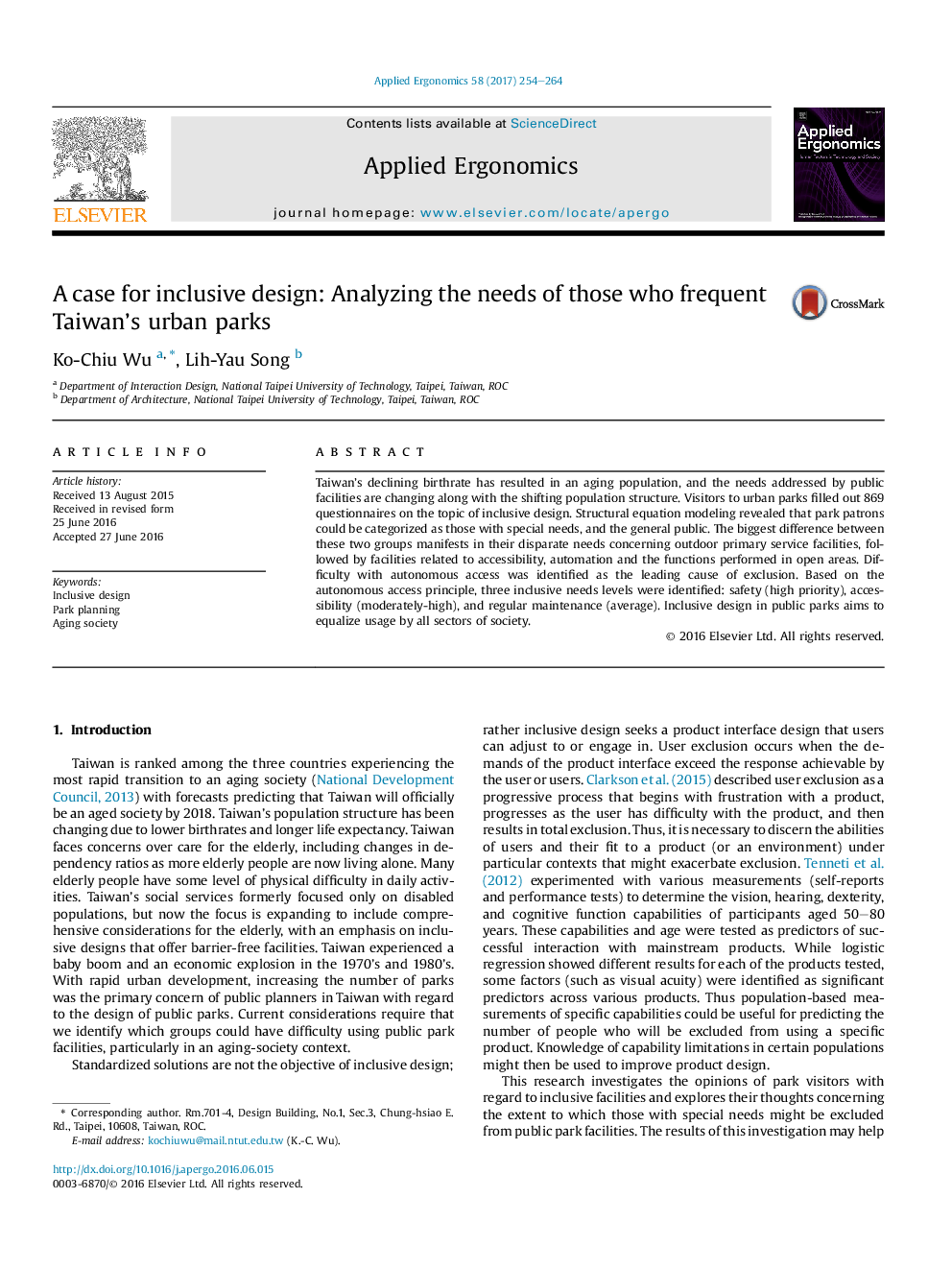| Article ID | Journal | Published Year | Pages | File Type |
|---|---|---|---|---|
| 6947751 | Applied Ergonomics | 2017 | 11 Pages |
Abstract
Taiwan's declining birthrate has resulted in an aging population, and the needs addressed by public facilities are changing along with the shifting population structure. Visitors to urban parks filled out 869 questionnaires on the topic of inclusive design. Structural equation modeling revealed that park patrons could be categorized as those with special needs, and the general public. The biggest difference between these two groups manifests in their disparate needs concerning outdoor primary service facilities, followed by facilities related to accessibility, automation and the functions performed in open areas. Difficulty with autonomous access was identified as the leading cause of exclusion. Based on the autonomous access principle, three inclusive needs levels were identified: safety (high priority), accessibility (moderately-high), and regular maintenance (average). Inclusive design in public parks aims to equalize usage by all sectors of society.
Related Topics
Physical Sciences and Engineering
Computer Science
Human-Computer Interaction
Authors
Ko-Chiu Wu, Lih-Yau Song,
